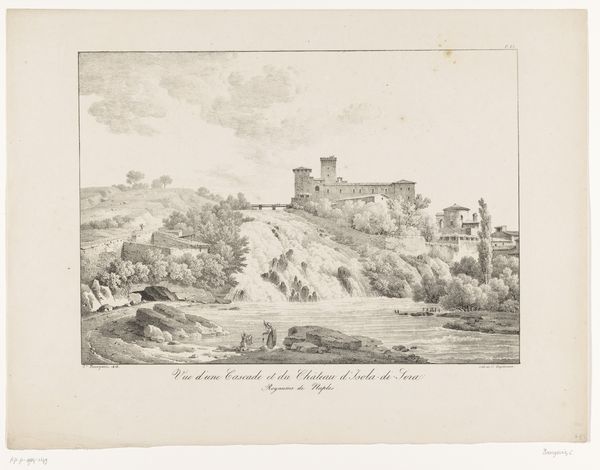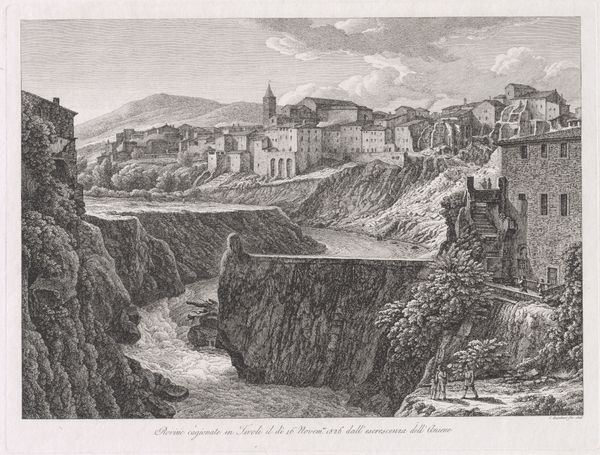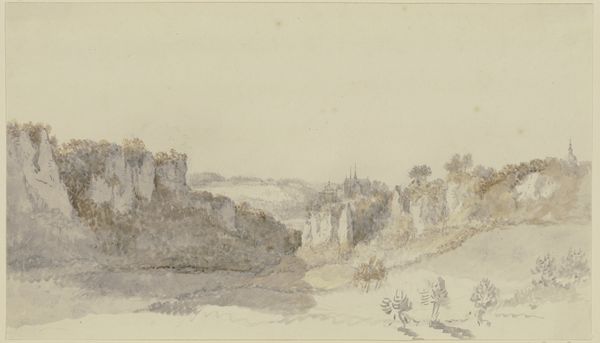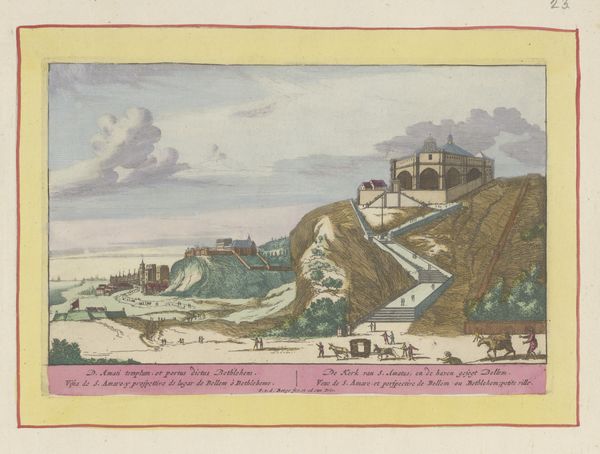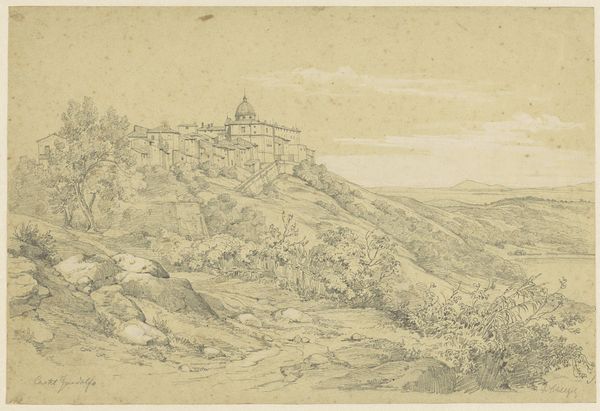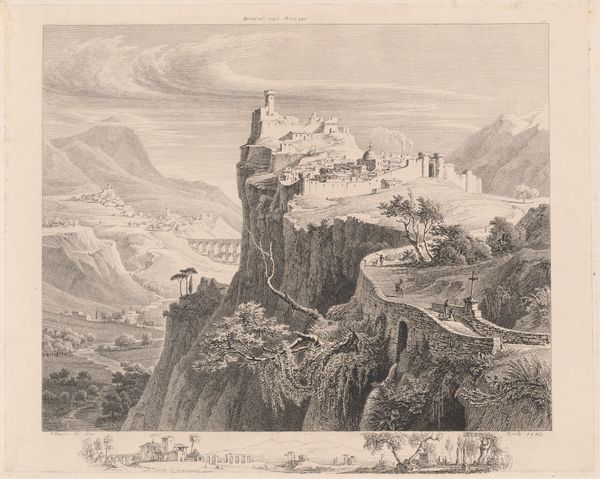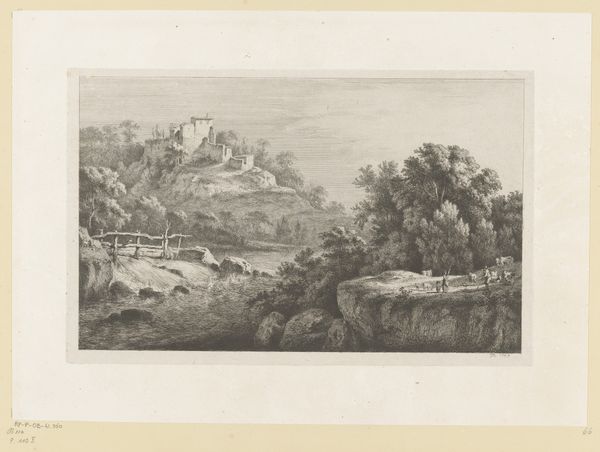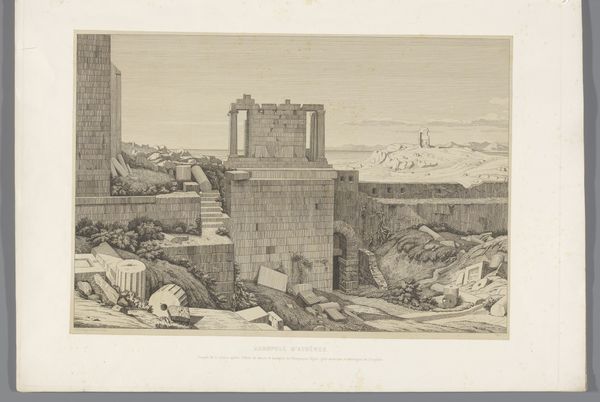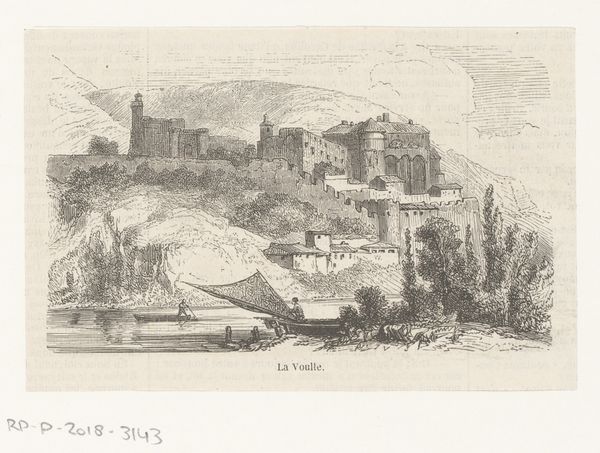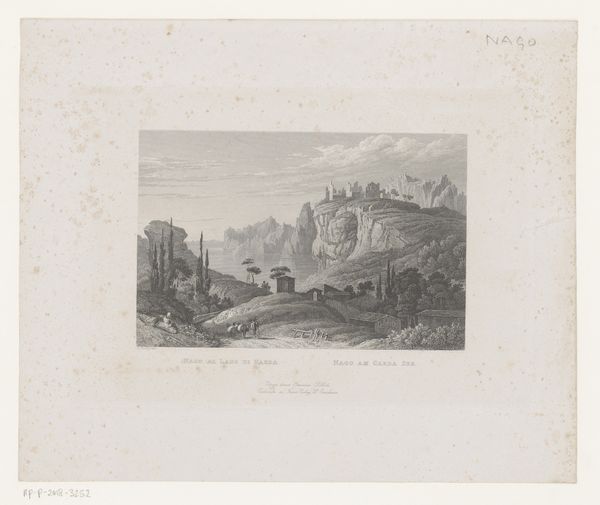
drawing, watercolor
#
drawing
#
landscape
#
watercolor
#
romanticism
#
cityscape
#
watercolour illustration
#
watercolor
Dimensions: 13 7/8 x 19 3/4 in. (35.3 x 50.2 cm)
Copyright: Public Domain
Curator: Here we have Josephus Augustus Knip's "Genzano and Lake Nemi," a watercolor drawing likely completed between 1792 and 1847. Editor: It has such a calm, almost faded quality, like a memory of a place. The textures, particularly in the water, seem incredibly delicate, despite the medium. Curator: It does capture a specific mood. Knip was working in the Romantic tradition, when landscapes served not just as records but as emotional registers. Lake Nemi and Genzano were popular subjects for artists on the Grand Tour seeking picturesque scenery imbued with historical weight. The Roman campagna, and its remnants, resonated deeply. Editor: The layers of the vista speak volumes to me; the building that appears to cling to the rocks and trees – I wonder about their actual source and what it was like to execute them. There are very soft almost hazy pastels there on a piece that appears fairly small – does it have some level of realism? What level of labour are we ascribing in such landscapes in contrast to the final reception of Romanticism? Curator: That's precisely the kind of discourse the image anticipates. Romanticism in part facilitated by emerging urbanity as an experience to be consumed, made available through drawings, prints and paintings. Those built structures signal power; while Nature encroaches as a quiet rebuttal and reclaiming force. These sites weren't pristine wilderness, but carefully cultivated scenes consumed by privileged travelers. Editor: I wonder then what such consumption of places meant at that time, not necessarily just a pretty rendition of nature, but instead as an ideal and commodified form, perhaps like landscape painting became to represent ideas such as expansion. Curator: Exactly. It mirrored and helped shape contemporary desires for the sublime and the beautiful but of course that's shaped by marketability, and a rising middle class that wanted access to that experience. It's fascinating to consider how these images influenced ideas of landscape, shaping both travel and artistic production. Editor: So, looking closer, one could almost chart shifting cultural and material values as embodied in such landscape renditions of specific locations, how interesting is that? Thanks for enlightening us today on its social underpinnings! Curator: Indeed. Every detail contributes to a rich interplay between history, art, and the forces that shaped their making and meaning.
Comments
No comments
Be the first to comment and join the conversation on the ultimate creative platform.
